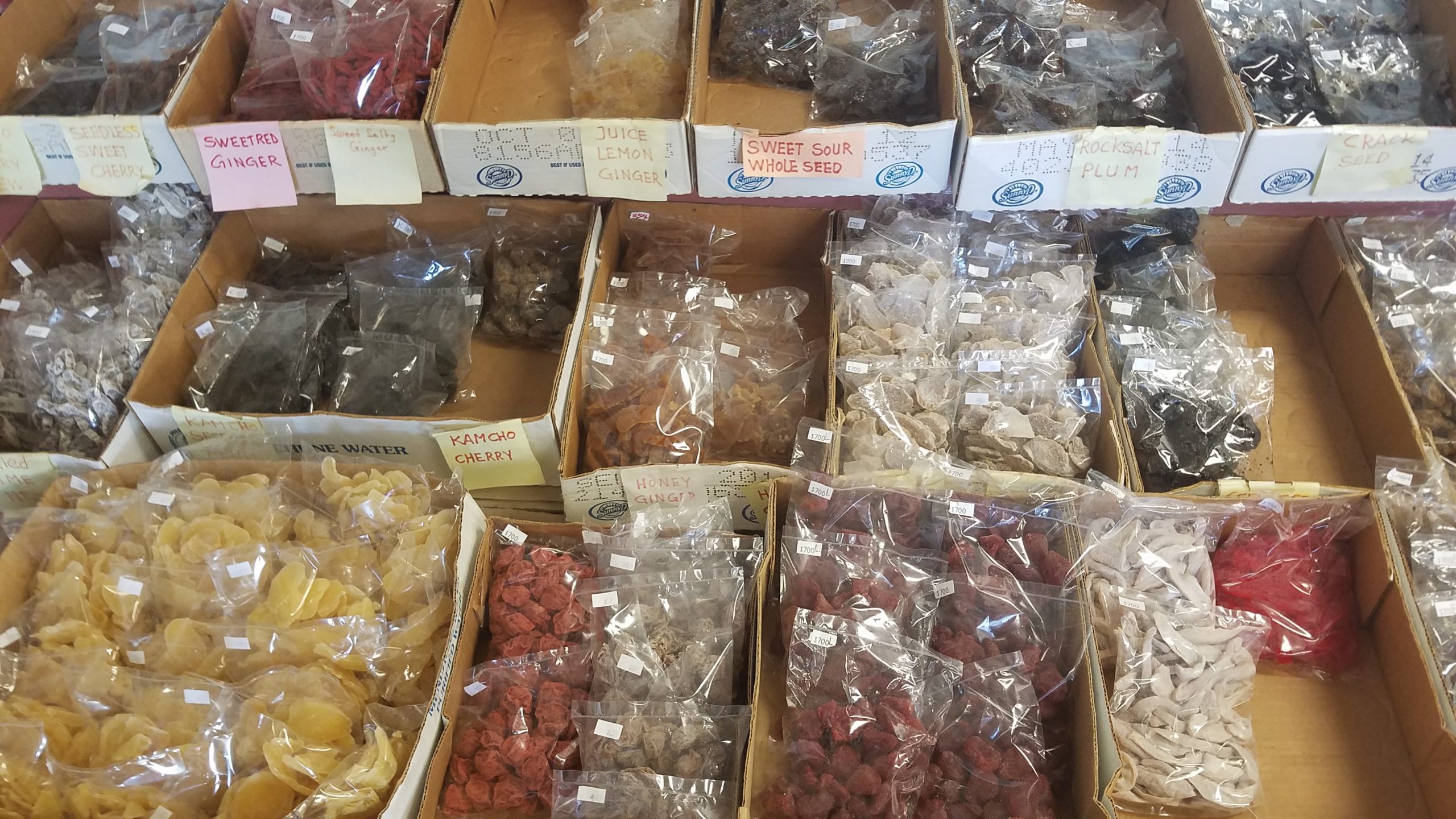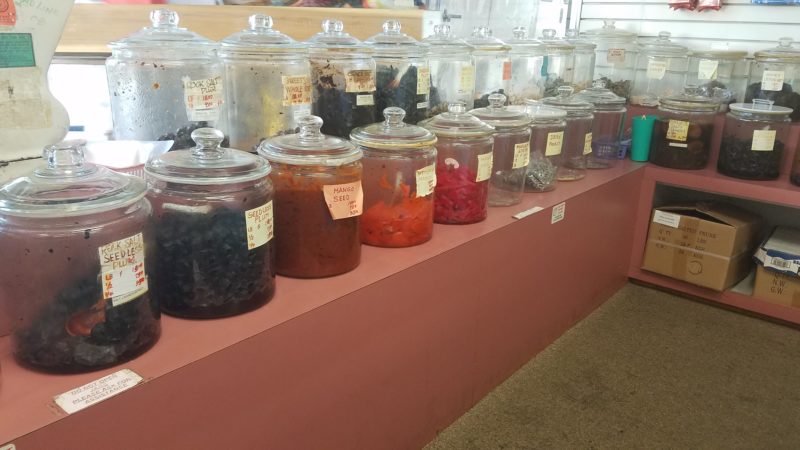Have you been to a crack seed store in Honolulu? These shops offer great treats and a unique experience.
What is Crack Seed?
Crack seed is a Hawaii snack with a taste that is, well, acquired. Generally speaking, it is a Chinese food item, imported with Chinese sugar plantation workers who arrived in Hawaii in the mid-1800s. Crack seed is essentially bite-sized preserved fruits, typically plums.
There is almost no end to the varieties of crack seed available to Hawaii consumers. And while prepackaged varieties of crack seed are available everywhere, from the local 7-11 store to whole sections of Longs Drugs, there remains a handful of crack seed stores in Honolulu that cater exclusively to the particular tastes of Hawaii residents, young and old.
Crack seed has a unique combination of salty, sweet, and sour flavors. That’s what sets Crack Seed apart from mainstream snacks like pretzels, candy, or nuts.

Li Hing: The Most Popular Flavor at Any Honolulu Crack Seed Store
Chief among crack seed flavors is Li Hing, which is a powdered mix of dried plum peels, salt, sugar, licorice (and sometimes – eep! – aspartame).
Some may say the Li Hing flavor has been culturally appropriated into margarita and martini recipes. Chefs experiment with the flavor, perhaps glazing a duck in a Li Hing reduction or incorporating it into a vinaigrette for a snobby salad.
These erudite applications aside, for many in Hawaii (and particularly for Hawaii residents away from home), Li Hing and any and all varieties of crack seed are truly a type of comfort food. It is safe to say that any care package from Hawaii will include some crack seed along with staples like Hawaiian host chocolates, mochi crunch and dried cuttlefish.
Memories from a Crack Seed Store in Honolulu
I’m speaking from experience when I say that crack seed is a comfort food for us here. This is because of the memories we associate with trips to a Honolulu crack seed store. To a Hawaii youngster raised on crack seed, those 5-gallon glass jars at the local crack seed store were not full of food, but of treasure. The smell was and is sweetly divine.
The proprietors were (and are) generally old folks, referred to reverentially as “auntie” or “uncle.” They knew you by name and your crack seed of choice. They knew the little league team you played on. And, they knew your preferred mix of Coke and Strawberry Slurpee (a common treat also available at crack seed stores).
The Ultimate After-School Snack
Every neighborhood Honolulu crack seed store is filled at the end of every school day with harried store owners trying to sell products while keeping an eye on rascals with sticky fingers. Everyone’s fingers were sticky when they were eventually chased out. “You bought, already! Go do your homework!”

We old-ish residents all remember now-defunct Yick Lung crack seed brand products. It was founded in Hawaii by Chinese immigrant Yee Sheong in the early 1900s. Among the flower lei that draped high school graduates in the 70s and 80s, there was always a string of Yick Lung treats.
Most everyone who grew up in Hawaii has memories of sitting on a street corner, sucking on a lemon embedded with a Li Hing Mui seed. Two if you were lucky. Crack seed was currency, to be hoarded and begrudgingly shared. It was a bargaining chip. “You like ride my bike? Three Li Hing Mui, den!”
I’ve tried to share the joy of crack seed with the kids of my mainland haole friends and family. I’ve failed almost categorically to no avail. I get that they don’t get it. It’s uniquely Hawaii to understand the simple pleasure of savoring a meaty Rock Salt Plum. Or nibbling at a flattened bit of salty-sweet dried and preserved lemon peel. You have to know to know.
Where to Find a Crack Seed Store in Honolulu
Want to experience the magic and tastes of a Hawaii crack seed store? Here are my suggested crack seed stores to know for interested visitors:
C-Mui Center
1111 Bethel Street, Honolulu 96813
808.536.4712
Crack Seed Store
1156 Koko Head Ave, Honolulu 96816
808.737.1022
Kay’s Crackseed
2752 Woodlawn Dr, Honolulu 96822
808.988.4338




